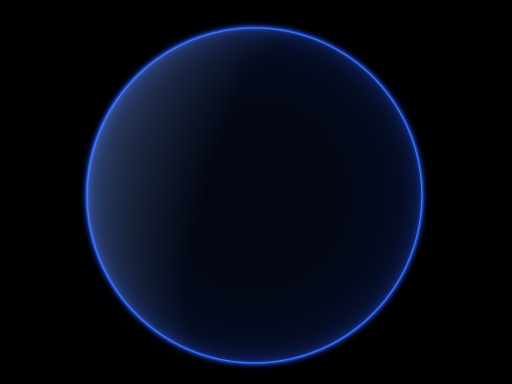Volume Rendering
CS 481/681 2007 Lecture, Dr. Lawlor
So we've seen tons of rendering using Triangles. Last week we did
a lot of Point rendering. Today we do Volume rendering. You
need volume rendering to render objects without well-defined surfaces, like clouds, smoke, or fire. It's also useful for examining 3D datasets, like MRI or CAT scans.
The Right Way to do Volume Rendering
Walk down a light ray. At each point in 3D space, the light
interacts with the scattering medium. Depending on the
assumptions, you can usually write this as an integral as a function of
distance along the light ray. If the scattering medium is simple,
you can analytically solve this integral. For example, the
integrated amount of light accumulated along a path through uniform
glowing fog is proportional to the distance you've travelled through the fog. This is hence really easy to compute--find the distance from the camera to the object, multiply by a constant, and there's your fog.
I was really happy to figure out that if the density of a planet's
atmosphere changes exponentially as a function of radius, then you can
actually approximate the atmosphere density along the ray with the
exponential of a quadratic polynomial of the ray parameter, which you
can then evaluate exactly using the "erf"
math library routine. This, combined with a simple
raytraced-spheres path calculator, lets you produce cool planets
without too much computing:

Unfortunately, for interesting distributions of light, it's often not
possible to analytically evaluate the volume rendering
integral. For example, in the image above, the atmosphere
is a uniform glowy color--accurate for a self-luminescent radium
planet, but wrong for a normal sunlit globe. In general, for any
distribution of light you can't analytically evaluate, you're stuck
with...
The Usual Way to do Volume Rendering
Walk down a light ray. Take discrete steps. At each point
you sample, let the light interact with the scattering medium.
See the difference? We've turned an infinite number of sample
points (a continuum problem) into a finite number of sample points (a
discrete problem). If we just wave our hands and say "as the
number of sample points along each ray goes to infinity, we eventually
approach the right answer" even though our framerate will drop to zero!
There are lots of ways to take discrete steps. You can literally
create rays and add in sample points--this is common in software
renderers. You can switch the order of rendering around and first
figure out what happens on the first step of all rays, then what
happens on the second step of all rays, and so on--this amounts to
drawing the volume as a series of alpha-blended texture-mapped planes,
and is a really common way to render stuff on the graphics hardware.
One problem with doing anything discrete in 3D is the data size--a 1024^3 volume is one billion
samples! Even a really coarse 128x128x128 volume is 2 million
samples. This makes it tricky to store or render high-resolution
volume datasets, although a low-res dataset does work OK.
Volume datasets usually compress pretty nicely as well--I usually stack
all the volume slices into a very tall skinny 2D jpeg, which seems to
work nicely.
How does Light interact with a Volume?
In principle, anything could happen to light while passing through a volume:
- The medium could emit light. This is easy--just add the emissive color to the old color.
- The medium could reflect light. This is really tricky in
general (volume global illumination), but you can do a reasonable job
for one-bounce effects from simple directional light sources by
approximating a normal (usually via the volume's density gradient) and
then shading each point in the volume the same way you shade a normal
2D surface. Diffuse reflections look fine, and even specular
reflections do OK at low specularity or high volume resolution.
- The light could be absorbed (beta, extinction). This can be
approximated fairly well by alpha-compositing the voxel color over the
old light color.
Source of Volume Datasets
I've got a bunch of datasets in "tall skinny JPEG of stacked slices" format
here.
Stefan Röttger at the University of Erlangen has a cool Volume Dataset Library. His volume-rendering software V^3 is pretty cool too, although the viewer only runs on nVidia boxes because he uses NV_register_combiners, the creaky grandpa of programmable shaders (ARB_fragment_program is the over-the-hill baby boomer; and GLSL is the flashy hip new kid).
